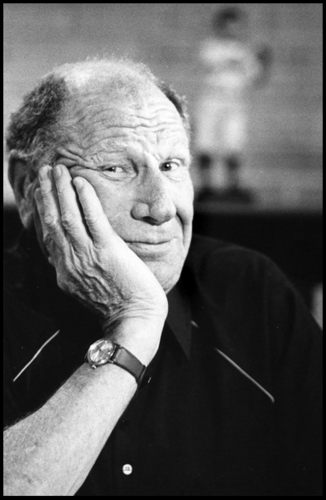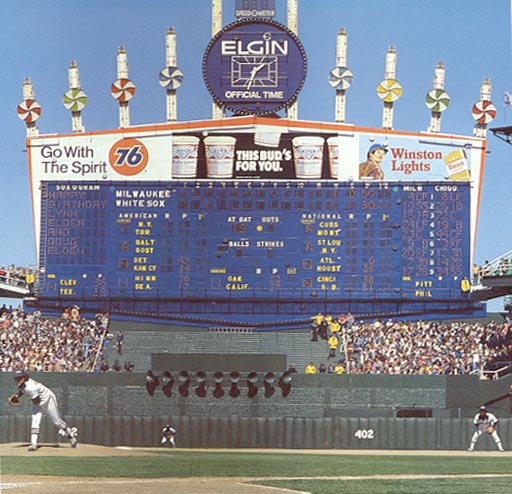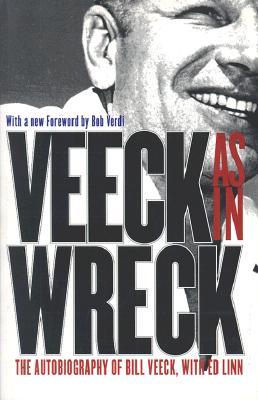I took a lot of cues from my late mother, Esther Knezovich, who was only too happy to provide them. For example, she’d lived in California in 1950 when Richard M. Nixon ran for the U.S. Senate against a woman named Helen Gahagan Douglas. Nixon smeared his opponent as a communist and won. My mom (whose maiden name was Latini, cue the Godfather music) held grudges. She also judged Nixon to be of generally low character. So growing up in our household, even as a boy, I was programmed to despise Nixon long before we learned anything about Cambodia or Watergate. I also learned my mom knew what she was talking about in some matters, and then some.

As heroes go, you can’t do better than Bill Veeck.
If my mom’s villains were mine, so were her heroes. One of them was Bill Veeck. She grew up in a small coal-mining town about an hour from Pittsburgh, and her Italian-born uncle and aunt had settled in not-so-far away Cleveland. That led to summer jobs waitressing at a restaurant that, if I remember correctly, was named Childs. My mom was a Pirates fan, but she adopted the Indians as her American League team. She lived with the aunt and uncle, and took in games at Cleveland’s old Municipal Stadium. One of those games was July 17, 1941, when she saw the Yankees’ Joe DiMaggio’s 56-game hitting streak broken.
Bill Veeck eventually bought the Cleveland franchise in 1946. He hired Lou Boudreau, a star shortstop, to be a player-manager—a typically unorthodox Veeck move. Boudreau delivered a World Series championship in 1948, the last time Cleveland won the Series. (Boudreau was eventually inducted into the Baseball Hall of Fame, and went on to become a broadcaster for the Chicago Cubs.)
That same championship year, Veeck’s Cleveland team broke the color barrier in the American League when he signed Larry Doby and then Satchel Paige. Larry Doby would eventually become the manager of the White Sox.

The exploding scoreboard was a big deal at Comiskey.
Veeck had cut his baseball teeth working for his father with the Chicago Cubs. William Wrigley, Jr., the chewing gum mogul who owned the Cubs, hired William Veeck, Sr., to serve as vice-president of the team. During the senior Veeck’s tenure, junior started as a popcorn vendor at Wrigley, and he is famously known for helping to plant the iconic outfield ivy.
After his time owning the American League Cleveland team, Veeck bought the National League St. Louis Browns. His time there is best known for a stunt: He signed Eddie Gaedel, a person with dwarfism in modern terms, to play for the Browns in hopes that Gaedel’s tiny strike zone would lead to walks.
Which brings us to the South Side of Chicago. Veeck owned the Sox twice. His first stint brought Sox fans a 1959 American League Pennant. Veeck built Comiskey’s exploding scoreboard, with the fireworks that are now standard after home runs at so many ballparks. The electronic pinwheels on the high-tech board at today’s Sox games are vestiges of the actual pinwheels back at old Comiskey. He constantly created promotions, like patrol boy night (that got me in free more than once) to Polish-American night, Italian-American night, … and so on.
His second stint as owner led to some infamy. He and his wife Mary Frances redesigned the Sox uniforms, and one iteration included short pants. One of his many promotions—Disco Demolition night—went too far and devolved into a small riot and a forfeited game.
Throughout his baseball life, Veeck constantly swam upstream against the conservatism of his fellow baseball owners. Way back when, for example, he introduced the radical “socialist” idea of the home teams sharing broadcast revenue with visitors. The owners balked, but that kind of revenue sharing is now part of the lucrative financial bulwark of Major League Baseball.
Even small moves were controversial: In 1960 the White Sox became the first team to wear uniforms with player names on the backs of their jerseys. Some howled. Mostly, it’s standard practice today.
I knew most of this by the time I hit my teens (the short pants and Disco Demolition came later) thanks to my mom. But my estimation of Veeck grew on its own as I learned more and more about him. Much of that was via his autobiography, co-authored by Ed Linn in an as told to style, called “Veeck as in Wreck.” It’s a treasure chest of information about the business of baseball, as well as a colorful chronicle of Veeck’s incredible life in baseball.
Veeck was crazy like a fox. He was—and probably still is—the only baseball owner who didn’t come into ownership because he was independently wealthy. His business was first and foremost, baseball. And for all the promotional gimmicks, he was a brilliant visionary when it came to the economics of the game.
And so, on the eve of game one of the 2016 World Series—whether you’re a Cub fan, Cleveland fan, White Sox fan, or simply a baseball fan—you owe it to yourself to give “Veeck as in Wreck” a read.
You’ll love your team, and the game, all the more.

Mike, your mother was a very wise woman. Bill’s daughter is a very good friend and wonderful Chicago artist. I’ve met Mary Frances and can tell you that the Veeck family still loves baseball and is every bit as real as your mom described. It was fun reading your recap. Go CUBS!!!
Beth had the good fortune of having lunch with Mary Frances a couple years ago and loved every minute of it.
What do Mike and The New York Times have in common? Bill Veeck. See
today’s NYT Sports Section for their take on the great Veeck. Go INDIANS!!!
That piece led to the blog! I really liked it. And it reminded me of the phenomenal sweep of Veeck’s influence. Also: Kluber.
You inspired me to learn more about baseball! Just requested a copy of the book from the library.
How refreshing this is in the middle of the Cub mania. Thank you!
Nice post, from a true-blue Dodger fan.
-Bob Ringwald
Bob, your boys had a good year, especially given the injuries. Kershaw didn’t look like he was at full strength, but I just saw that he does not need back surgery, which is good news.
Great info, Mike. Bill Veeck was a dynamo! I’m a lifetime Cubs fan, but was happy when the Sox won the pennant. I went to their victory parade. It’s now the Cubs turn for glory. GO CUBS!!!!!!
Loved this post and loved the book, where I learned about Eddie Gaedel, all 3’7″ of him. Go, Tribe, say I. And cheers to the most beautiful game ever invented. Here’s something for you to enjoy and share. https://www.youtube.com/watch?v=nKzobTlF8fM
I so agree about the book, mike, I read it years ago and thought it and he was great! Thanks, for being such a gracious non-cubs fan! Bryan
>
Leave a Response